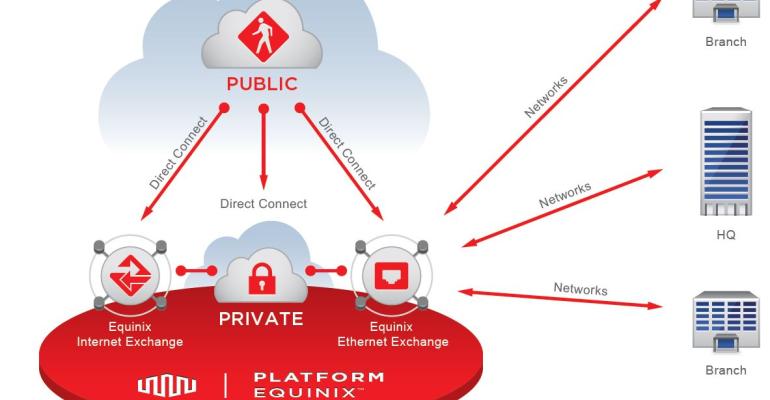Hybrid cloud, which draws from multiple in-house and external resources, is the hot trend in 2104. To date, organizations have taken a “lite” approach for in-house private cloud using commodity hardware, virtualization and dynamic provisioning technology. However, the increased availability of ‘cloud operating systems’ such as OpenStack make it easier to replicate public cloud capabilities in-house. Thus, the concept of a hybrid cloud infrastructure really became popular.
Still many IT shops were faced with challenges questions around their cloud environment. This white paper from Equinix, examines key factors when making the decision in terms of resource placement and utilization. This includes:
- Bandwidth between the organization and the Internet
- Resourcing, technical skills and knowledge available in-house
- Security constraints and data compliance criteria
- Performance and availability stipulations
- Flexibility requirements and service level guarantees
- Available budgets and procurement constraints
Such criteria can be used as a checklist for decision making. An important point to note is that ‘hybrid’ does not mean ‘hotchpotch’, in which anything goes. Rather, it means working proactively at the architectural level, ensuring workloads are in the right places and that the right (high bandwidth, low latency, high availability, high security) communications paths exist between them.
Download this white paper today to learn about the key steps to creating a cloud-enabled enterprise. In understanding this environment around cloud technologies – your organization will see the six main factors in a cloud deployment roadmap. This includes:
- Legacy infrastructure – The starting point for most enterprises with in-house legacy systems, reflecting in-house technology delivery across the latter part of the last century.
- Dedicated connection – Private connection from a choice of carriers, bypassing the Internet to reach the Equinix ecosystem of best-of-breed cloud providers.
- Enterprise Cloud Gateway – Small footprint with core services that deliver Single Sign On (SSO) from legacy systems to public cloud services, even during in-house outages.
- Private cloud – Virtualization infrastructure that scales over time as business applications are migrated to it, minimizing risk and capital investment.
- Hybrid cloud – Seamlessly integrated public, private and legacy components, giving businesses access to the Platform Equinix ecosystem, enabling them to directly access their customers, suppliers and partners while offering maximum flexibility and agility.
- Public cloud – In the long term public cloud services displace legacy and private components, with Platform Equinix being the neutral point of interconnection.
Remember, cloud computing will only continue to expand and impact the modern organization. In creating your own environment, take the time to understand all of the critical cloud models and how they can help your business adapt to ever-changing industry demands.




